Illinois Soybean Stem Pests Update
Dr. Ahmad Fakhoury and Dr. Nick Seiter provide updates on the Soybean Stem Pests project, highlighting the identification of fungal pathogens from diseased plant material and the statewide survey of dectes stem borer and soybean gall midge.
Are We Getting Too Much Rain?
Rainfall continues across Illinois, with some areas welcoming the moisture while others face potential excess. The IL Soy Envoys discuss this issue, along with disease pressure and insect reports in corn and soybean fields.
Corn Leaf Aphids Attack!
Corn leaf aphids are invading corn fields, and wet conditions are leading to an increase in disease. The IL Soy Envoys discuss these challenges, sharing insights on disease and insect pressure, along with other field reports.
Field Talk: To Spray or Not to Spray Fungicides?
Dr. Boris Camiletti, Plant Pathologist at the University of Illinois Extension, and Dr. Carl Bradley, Plant Pathologist at the University of Kentucky Extension, explore the impact of fungicides on yield. They also share fungicide trials and when to consider an application. This presentation was featured at the Illinois Soybean Association's Field Talk at Rend Lake College on June 20, 2024.
More Rain…Now What?
Illinois experienced significant rainfall this week, including a derecho that brought substantial precipitation to several areas. How will this impact the crops? Our IL Soy Envoys share their insights on the situation, along with updates on fungicide applications, pollination challenges, corn leaf aphids, soybean diseases, and more.
Phytophthora In Your Fields? Why You Need to Start Planning for 2025
After several weeks of heavy rain, Stephanie Porter, CCA, has been receiving calls about sparse soybean stands in certain fields. If hail, slugs, herbicides, or human error aren’t to blame, what else could be causing the problem? Find out in our latest blog post.
Should You Apply a Fungicide?
Halfway through the growing season, many farmers are debating fungicide application despite low commodity prices. What do our IL Soy Envoys and Certified Crop Advisers think? Tune in for their latest crop updates, Hurricane Beryl rainfall reports, Illinois record crop predictions, and more!
Staging Soybeans for Fungicide at the R3 Growth Stage
When scouting soybeans for fungicide application, it's important to first check the growth stage across the field. Stephanie Porter, CCA, demonstrates how to identify the R3 growth stage in soybean plants and how to inspect for diseases such as Septoria brown spot and insect damage.
Suspect Red Crown Rot in Your Soybeans? Get a Free Diagnosis Now.
Researchers are on the lookout for Red Crown Rot (RCR) across Illinois. If you suspect RCR in your fields, send your diseased samples to the USDA-ARS lab in Urbana for free. Help us monitor and identify new areas in Illinois where this pathogen has spread.
And the Bad News Is?
After a week's break, the IL Soy Envoys have returned to provide their latest field reports. They cover precipitation levels—or the lack thereof in some regions—and discuss the emergence of tar spot and other potential diseases.

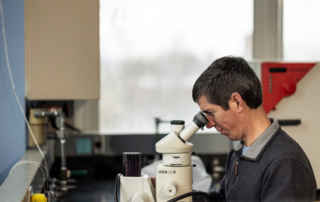

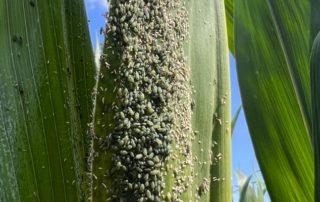
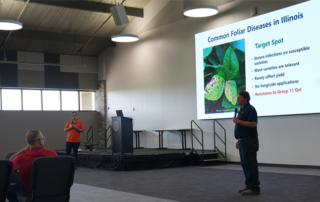


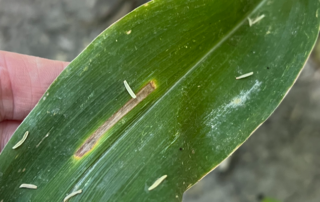

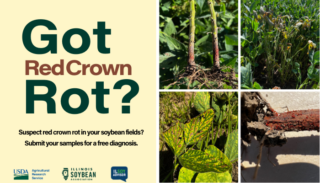
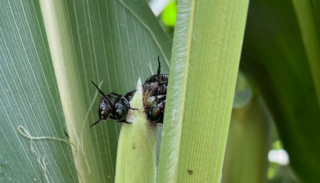

 and then
and then